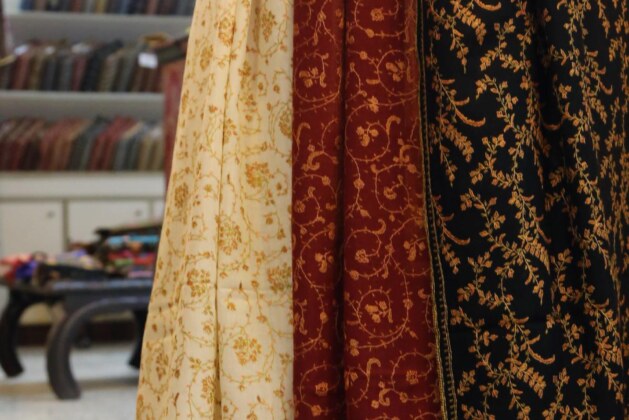:
Winter has heralded the entry of Kashmiri shawl sellers in Delhi for several decades. Shouldering bundles full of pashmina shawls, pherans, and dry fruits, the sight of Kashmiri traders going door to door in the months of November to February is still common. However, many say the business is not what it used to be, and some blame online shopping platforms for the dip in sales.
“I have been coming to the city every year for 30 years,” said 45-year-old Farooq Ahmed. “As a teenager, I remember being up all night before we were to leave for Delhi. Such was the excitement. Since then, I have experienced similar emotions every year. However, the dip in sales since the pandemic has been a huge letdown,” he said.
Mr. Ahmed, who works as a manual labourer for the rest of the year, said while his father and grandfather worked as shawl sellers, he would not want the same life for his son. “The troubles are too many while the profit margins are decreasing continually,” he said.
Mansoor Ahmed, 46, a wholesaler and manufacturer of Kashmiri handicrafts, says he did ₹30-35 lakh worth of business every season before the pandemic, but over the past three seasons, the business has remained within ₹20-25 lakh range.
The traders blame several factors for the slide in the business. First, getting into housing societies has become difficult due to the installation of access-controlled gates. Second, online shopping has allowed people to buy shawls, pherans, and other items from Kashmir throughout the year and at more affordable prices. Some, like Mr. Ahmed, have also observed a reduction in the public’s purchasing power.
Reshma, 57, who lives in Kailash Colony, said, “Every winter, the same seller would come to our house. We call the women neighbours, and the sale happens over cups of tea. However, we haven’t called him in two years as my daughter and daughter-in-law prefer buying clothes online.”
Muhib is one of the traders who has reaped the rewards of shifting his ancestral business online. The 25-year-old says he serves more customers through his website than he could by going door to door. “Also, when traders come to the Capital, they prefer to carry more expensive items. Websites give customers access to products across the price range, which is why this model has boomed,” he said.
Manjoor feels the market for shawls and pherans in Delhi is unpredictable. “I have close to 100 customers in Delhi. In one season, my customers may place a lot of orders and recommend me to their family and friends. In another, I may get very few orders. But we still manage to make enough,” said the 41-year-old trader.
When Manjoor is not going around the city selling his wares, he tries to woo customers back in Kashmir. “The work is hard, but we are used to it. Some days we earn, some days we don’t, ” he said.
month
Please support quality journalism.
Please support quality journalism.




Leave a comment